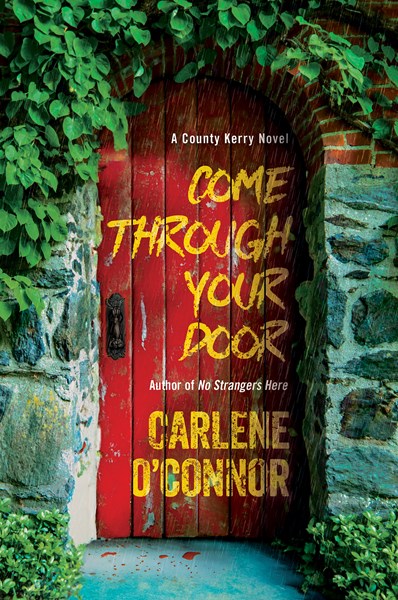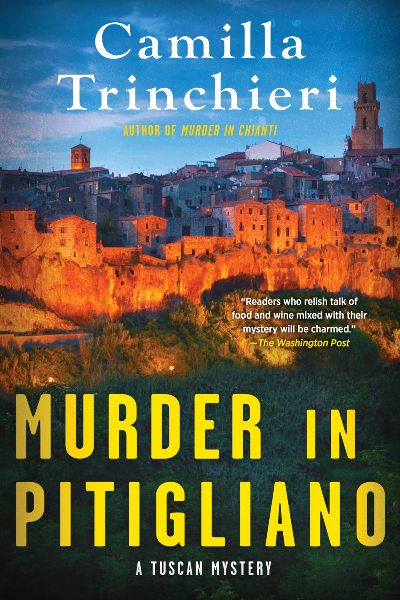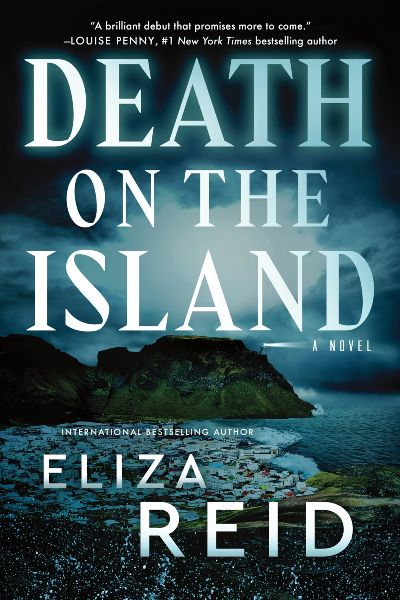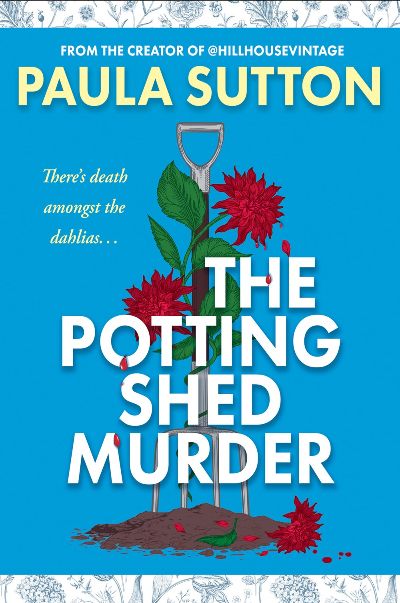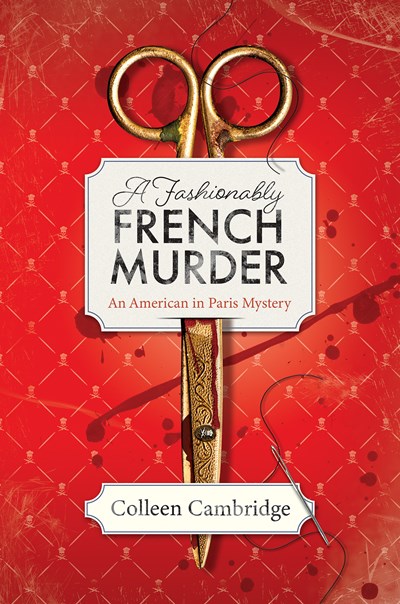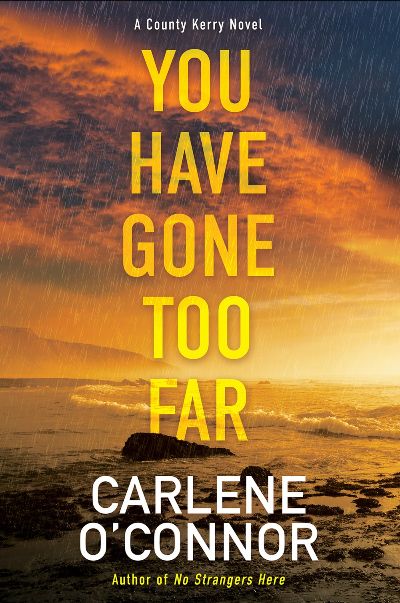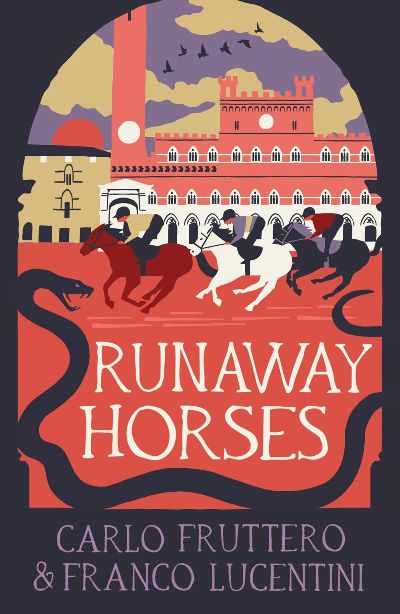Twists within deceptions are at the heart of O’Connor’s story of insanity, confusion, and murder. Some readers, in fact, may need to take notes to keep straight the murder of Annabelle a year ago from what is happening in the present day. Veterinarian Dimpna Wilde is once again at the center of events that involve her assistant, Niamh, with a dead body found in her apartment. Cormac, Dimpna’s love interest, is investigating and is tricked by a fake crime-scene photographer who cleans the scene of evidence and disappears, just one of the outlandish events that occurs. The confusion about who is who and what is what is eventually explained, but hardly makes the situation clearer. There is even a bizarre Irish pun of a name that somehow brings the murderer into focus. This series, while offering much in the way of Irish local color, is far from cozy, and offers a lot of satisfaction for readers willing to untangle all the complicated knots.
International
Considering the title, you could be forgiven for thinking this is a frothy, fun-filled mystery akin to Only Murders in the Building. And while there is some droll humor here, this book also tackles serious social issues, including domestic violence and a murder that reverberates through the decades. The plot is both simple (Elín S. Jónsdóttir, a famous, older, mystery writer disappears) and complex (she has many friends who would be willing to help her vanish). But what’s the motive? That question lies in the hands of young detective Helgi Reykdal, who should be familiar to many readers from Jónasson’s Death at the Sanatorium. The two books share much in common, including multiple timelines and a rapid pace that keeps the readers on their toes. As the onion gets peeled, and the pieces start to fall apart, the book becomes increasingly transparent. Exhilarating and gripping; fans of Agatha Christie and Nordic Noir will find much to enjoy here.
A new installment in Trincheri’s mystery series is a call for nothing less than celebration. Retired NYPD detective Nico Doyle, now living in Tuscany, takes it upon himself to investigate a murder that has torn a family apart. A message discreetly deposited in the collar of Nico’s dog (“Please help my babbo”) by Cilia, a seven-year-old girl, piques Nico’s interest. Enough that he decides to take up the investigation and locate Saverio, Cilia’s father, who disappeared after his partner in an electronics store was killed, with Saverio the carabinieri’s number one suspect. Nico starts by questioning some of the local folk and friends in Gravigna, his hometown, but eventually he heads off to the larger, beautiful town of Pitigliano, where the murder took place. Rich in culture, food, wine and—above all else—friendship, this is sure to be loved by fans of cozyish series, gentle police procedurals, and Italia!
A powerful novel that spans generations as it takes us deep into rural western Sweden. It’s the holidays in the winter of 1999, and most people are anxious about little more than where to hide their money before it disappears into Y2K, when the police discover a terrifying accident. A car is found smashed into a tree, leaving behind a bloody steering wheel and the body of a local teen in the trunk. With such a small community, you would think that the secrets would come tumbling out. But no. These people aren’t talkers. Terse and taciturn, both adults and teens remain reserved. Even the new young officer, Siri Bengtsson—who is closely watching two young men as suspects—can’t successfully crack either the families or the teens. Jump ahead 20 years, when there is a similar murder, strange enough to coax Siri out of retirement, and to finally get some of those teens—now adults—talking. Carlsson (Blaze Me a Sun, Under the Storm), who has a doctorate in criminology, is the recipient of several prizes in Scandinavian crime writing. Readers who enjoy his work will also appreciate Liza Marklund, Ragnar Jónasson, and Tana French.
It’s hard to believe that Dr. Emilia (Em) McRoy has been in Sea Isle, Scotland for a year. She moved from Seattle to the village to take over as doctor and, to her surprise, as the local coroner as well. In this fourth outing (previous titles include Death at a Scottish Christmas) in the series, she and her family of friends become involved in the death of a local accountant and train fancier on the opening night of a restored historic train ride. Ewan, local Laird, constable, and her sometime nemesis, has decided it’s easier to include her in the investigation than to rescue her from the scrapes she gets herself into when she goes off by herself. With suspicion of financial skullduggery, there are plenty of suspects, but no one stands out; we have anaphylaxis, cheating spouses, and estranged siblings. The charming customs and landscape enhance the story as Em continues to settle into the folklife and tempo of the village and, of course, solves the crime. The engaging characters and tightly worked plot will leave readers eager for the next installment.
As a former first lady of Iceland, Reid has plenty to draw on when it comes to this tale of a far-too-eventful diplomatic trip to Iceland’s remote Vestmannaeyjar, or Westman islands, by a Canadian delegation that might result in the island’s main employer expanding to Canada. The visitors’ carefully managed tour brings them to Skell, a gourmet restaurant that uses local herbs in its food and in its dramatic, served-on-fire Flaming Viking cocktail, a ritual that sees one of the delegation drop dead on the floor. And that’s not even the only mysterious death in the town lately: before the big visit, the town’s mayor found his husband dead; the devastated widower insists it’s murder, but the police ruled it a death by natural causes. The Canadian ambassador’s wife, Jane, takes up an investigation of the restaurant death but is soon drawn into fast-moving undercurrents: politics in the town, diplomatic tendencies to overlook problems that won’t go away, and, as always, tensions in personal relationships, including in her own marriage. There are many threads to pull at here, plus the rich details of diplomatic and Icelandic life, add to an engrossing whodunit that offers a delicious ending twist.
Might this book be a cozy mystery? Let’s run it through my cozy-meter and find out. One, do we have much empathy for the lead character? Absolutely. Daphne Brewster, a Black woman—in fact, the only person of color as far as the eye can see—has moved her husband and family out of south London to a Norfolk town called Pudding Corner to escape urban woes. She’s become so successful at selling antiques that she’s now known as the vintage lady. Still, it turns out that things are as complex in Pudding as they are in London. Two, isn’t the book too slow? No. If you want faster, go find James Patterson. The characters in this town are so absolutely delightful as they roam about the town that I would happily spend another day or two with them. Again, the name: Pudding Corner. Might that be a hint as to what we can expect? Three, is it sexy and violent? Much more yearning than sexy. And if there had been any sex, it was years ago. As to the violence, it is offstage, involving a corpse that keels over in his allotment patch—a little garden the size of a postage stamp where Brits go and plant rutabaga on the weekends. Four, is this book a stand-alone? We hope that the publisher is sensible and Ms. Sutton will be back to delight us again with Daphne and Book Two.
Expat Tabitha King—formerly of suburban Detroit—is living, as the kids would say, her best life. She’s upped and moved to post-war Paris—she’s bilingual thanks to her mother and French grandmother—and this third, and best, in the mesmerizing “American in Paris” series finds Tabitha hanging out with her chum Julia Child, from whom she picks up some much-needed cooking tips. She’s also settling disputes between her Grand-père and his partner, Oncle Rafe (they are reopening a restaurant, thus the agida) and dipping her toe in the heady world of haute couture, with Christian Dior, who makes a cameo appearance, leading the way with his “New Look.” But when Tabitha discovers a body in one of the exclusive fashion ateliers, all the frothy fun comes to a halt, or at least a sputter, as Tabitha, with the sometime help of the all-too-handsome Inspecteur Merveille, throws herself into the search for the murderer. It’s a search that takes Tabitha back to Paris during the Occupation and the work of the Resistance against the Nazis and the French Vichy government, as well as those whose role was less clearly defined. Rich in history, full of the value of friendship and family, and with a very, very slow-growing romance (we want more, Colleen!) this is certain to be one of the best mysteries of 2025.
O’Connor’s latest Ireland-set novel is darker than her previous titles, but will still work for her many fans. Steadfast, kind veterinarian Dr. Dimpna Wilde is back, and this time life in her hometown, tourist hot-spot Dingle, Co. Kerry, is repeating itself in a macabre way. Only locals remember that 29 years ago, a cult centered around two men’s obsession with pregnant women ended in death and the men being sent to prison. They’re out now, and horrifyingly seem to be at it again, as a pregnant woman is found dead in a bog near the town and another is missing. A local child has been snatched, too, and Dimpna’s love interest, Detective Inspector Cormac O’Brien, is on the case, desperate to find the missing locals. An officer who worked the previous case threatens to destroy this one with her fixation on the just-released men. The best and the worst of small-town life come together here to great effect, and the nail-biting chronicle of the missing duo’s ordeal, with the pregnancy clock ticking, makes for an engrossing read that’s topped off by an exciting, satisfying ending. A realistically portrayed deaf protagonist adds texture to the story. While you’re waiting for this terrific read, watch a documentary with elements of similarity: Gloriavale: New Zealand’s Secret Cult.
And now for something completely different. Carlo Fruttero and Franco Lucentini were well-known Italian authors who co-authored several mysteries, throughout the 1980s and ‘90s, under their surnames of Fruttero & Lucentini. Their best-known works are The Lover of No Fixed Abode, set in Venice, and The Sunday Woman, which was made into a film starring Marcello Mastroianni and Jacqueline Bisset. Runaway Horses takes place in Siena during the Palio of Siena, the biannual horse race that the Sienese have been celebrating since the 13th century. It features lawyer Enzo Maggione and his wife, Valeria, who are traveling from their home in Milan to Siena, visiting Valeria’s brother along the way. But the two never make it to the farm; instead, they encounter a violent storm and take refuge in a nearby, sprawling estate. Here they find a most idiosyncratic group, including Puddu, the best known of the Palio’s jockeys. Fruttero and Lucentini take the reader deep into the arcane practices of the Palio, which are full of plots and counterplots, while Enzo and Valeria discover their attraction not only to each other but to other residents on the estate as well. Readers with an interest in Siena may enjoy the exhibit Siena: The Rise of Painting 1300-1350, which is currently on display at the Metropolitan Museum and will travel to Britain’s National Gallery in spring 2025.

